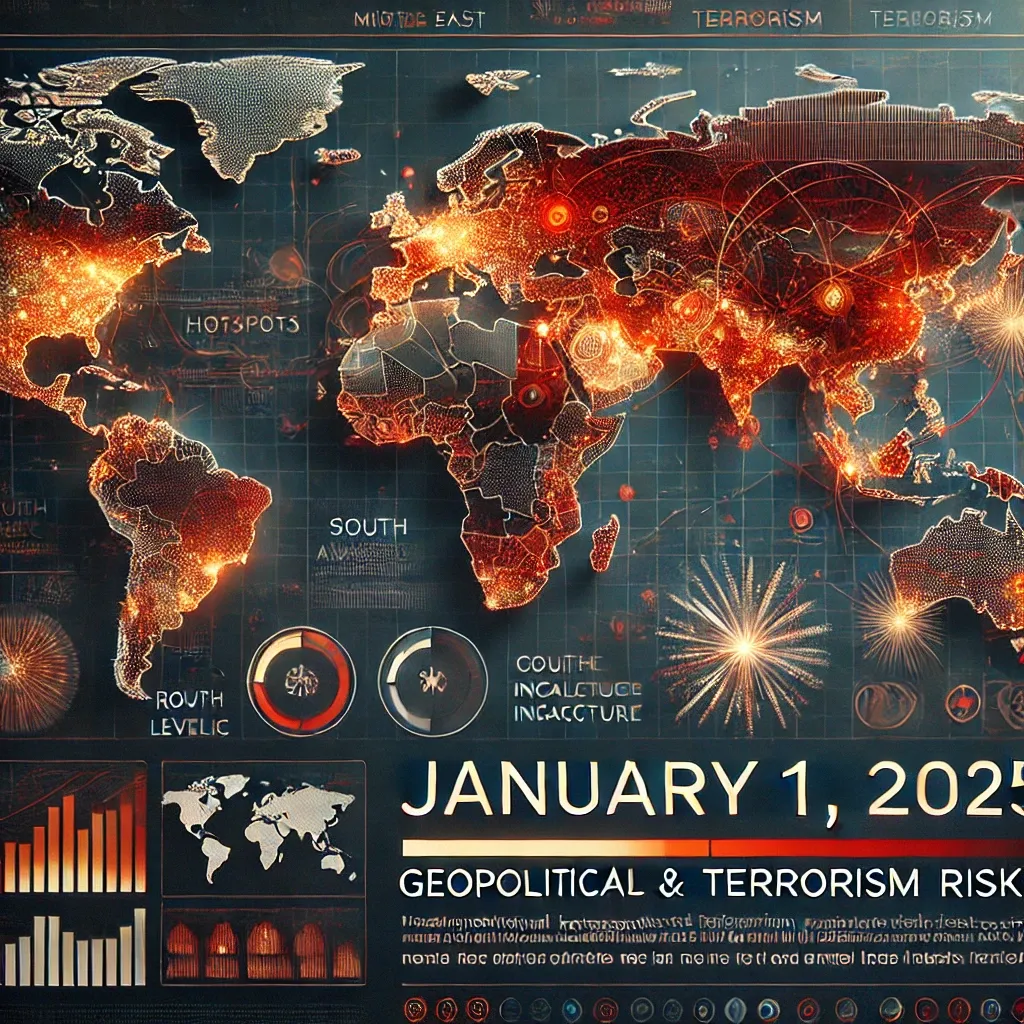Prime Rogue Daily Risk Report: January 1, 2025
Introduction
The start of a new year often symbolizes hope and renewal, yet it also carries inherent risks due to the high visibility of public celebrations, symbolic anniversaries, and the confluence of historical tensions with modern geopolitical developments. This report explores the intersection of past and present risks while forecasting potential threats for January 1, 2025. Leveraging historical context, current events, and predictive analytics, we aim to equip stakeholders with actionable insights to navigate an increasingly complex global environment.
Executive Summary
January 1, 2025, is shaped by the following key elements:
- Symbolic Anniversaries: Events like Australia’s federation and global New Year’s celebrations create opportunities for national reflection but also vulnerabilities to disruption.
- Recent Events: The aftermath of a terrorist attack in New Orleans, rising Middle East tensions, and escalating US-China trade disputes create a volatile backdrop for global risk.
- Predicted Risks: High-profile gatherings and critical infrastructure are likely targets, with attack vectors including cyberattacks, IEDs, and lone-actor violence.
Stakeholders are advised to bolster security measures, enhance cyber defenses, and monitor high-risk regions closely.
1. Historical Significance and Symbolism
Key Anniversaries
- Commonwealth of Australia (1901): The unification of Australian colonies into a single nation marks a day of national pride. However, public celebrations could draw attention from groups seeking to exploit nationalistic tensions or protest government policies.
- New Year’s Celebrations: Iconic events like the ball drop in Times Square or fireworks in Sydney are globally televised, making them symbolic targets for disruption.
Lessons from History
- December 31, 2024, New Orleans Attack: The targeting of a public venue during New Year’s Eve underscores the ongoing risks to mass gatherings. Similar tactics may be attempted elsewhere.
- Terrorist Anniversary Tactics: Groups like ISIS and Al-Qaeda have a history of leveraging anniversaries to amplify the symbolic weight of their attacks.
2. Current Events Shaping Risks
US-China Trade Tensions
- The continued standoff over trade restrictions and tariffs raises the likelihood of cyberattacks targeting economic infrastructure. Businesses in the US and allied nations should anticipate potential disruptions to supply chains or financial systems.
Middle East Instability
- Renewed violence in Gaza and along Israeli borders signals an escalation in regional tensions. Iranian-backed militias may increase operations, targeting Israeli or allied assets in response to recent policy decisions by Western nations.
Domestic Extremism in the US
- Domestic groups, fueled by political polarization, remain a key risk. January 1 may see opportunistic acts aimed at government facilities, public celebrations, or high-traffic areas.
3. Predictive Analysis
Potential Targets
- Public Gatherings
- Global New Year’s celebrations, especially in urban hubs like New York City, London, and Sydney.
- Regional religious gatherings in South Asia and the Middle East.
- Critical Infrastructure
- Transportation hubs (airports, train stations) experiencing peak holiday travel.
- Energy infrastructure in the Gulf region, vulnerable to sabotage or cyberattacks.
- Diplomatic Sites
- Embassies and consulates, particularly US and EU representations in volatile regions.
Likely Attack Types
- IEDs and Explosives: Deployed at crowded public venues, these remain a primary tactic for creating mass casualties.
- Cyberattacks: Financial institutions, energy grids, and government systems are high-value targets for ransomware or DDoS attacks.
- Lone-Actor Attacks: Small-scale, high-impact actions, such as shootings or vehicle-ramming incidents.
High-Risk Regions
- Middle East: Potential escalation in Gaza or spillover into neighboring countries.
- South Asia: Insurgent activity in Afghanistan and Pakistan, with risks to civilian and government targets.
- Europe: Returning foreign fighters and radicalized individuals pose threats, particularly in France and Germany.
- North America: Urban centers and critical infrastructure in the US remain vulnerable to domestic extremism.
4. Implications for Stakeholders
Businesses
- Cybersecurity: Strengthen defenses against potential ransomware attacks.
- Risk Management: Diversify supply chains to mitigate geopolitical disruptions.
Government Agencies
- Public Safety: Increase security at major events, focusing on crowd control and rapid response.
- Intelligence Coordination: Share threat data internationally to preempt attacks.
Public
- Awareness: Stay informed through official advisories and limit exposure in high-risk areas.
- Preparedness: Know emergency response procedures for large gatherings.
5. Recommendations
- For Governments: Bolster security at public events, enhance surveillance of extremist groups, and prioritize cybersecurity across critical sectors.
- For Businesses: Conduct risk assessments, particularly for supply chains and IT systems, to anticipate potential disruptions.
- For the Public: Exercise heightened vigilance and maintain situational awareness, particularly in crowded or iconic locations.
Conclusion
January 1, 2025, presents a microcosm of modern geopolitical risk: symbolic anniversaries, volatile regions, and the ever-present threat of terrorism and cyberattacks. By understanding these dynamics, stakeholders can better prepare for and mitigate risks, ensuring safety and stability in an uncertain world.
